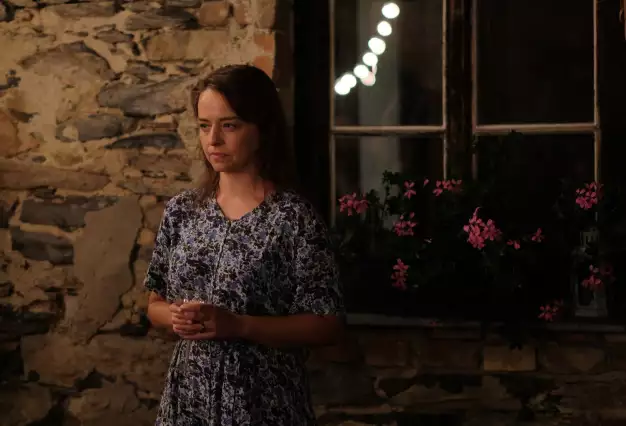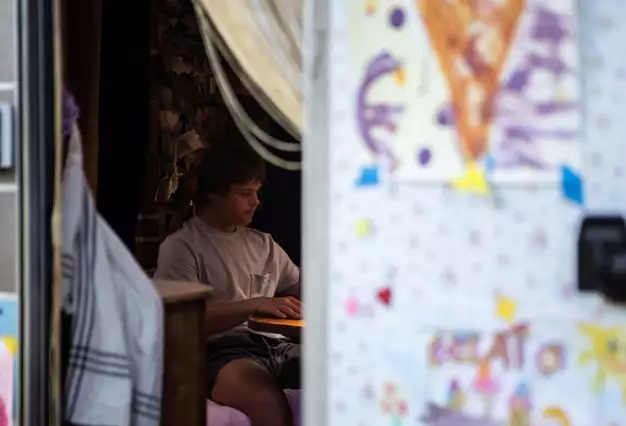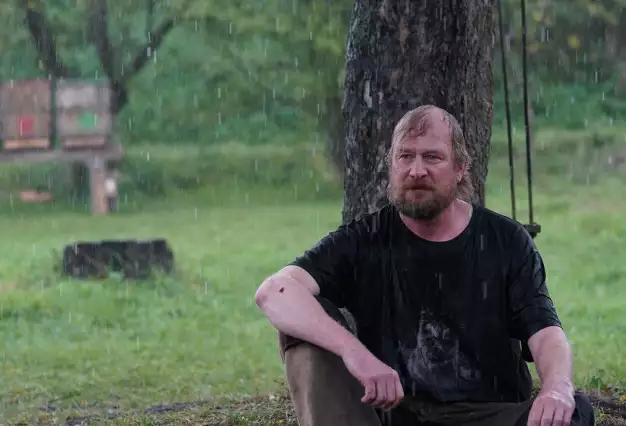
After an extensive writing process, the coproduction suddenly came together, and in less than two months first-time writer and director Michal Hogenauer had to put together a crew and a cast of mainly foreigners for a shoot on location in Latvia. Two weeks after his return, we sat down with Hogenauer for a revealing talk about his doubts surrounding his debut feature, Outside (working title), and how he pulled off the production in such a short time.
Article by Louise H. Johansen for Czech Film Magazine / Spring 2018
It’s my first feature, so everything was a challenge,” Hogenauer says. “No matter how many films you watch, how many film essays and interviews with directors you read, you’re still alone on the set and it’s up to you to figure it out. The only thing you can rely on is intuition, but that’s difficult when you’re under time pressure.”
The Prague-born Hogenauer (b. 1984) treads carefully when asked to describe his film. Recently returned from 25 days on location in and around Riga, the shooting is still fresh in mind and it’s a challenge to get perspective on it. “The story is about a Czech girl named Mia who goes abroad to work as an au pair for a rich family. She has to take care of the household and a 10-year-old boy, but the family has a strange set of rules.”
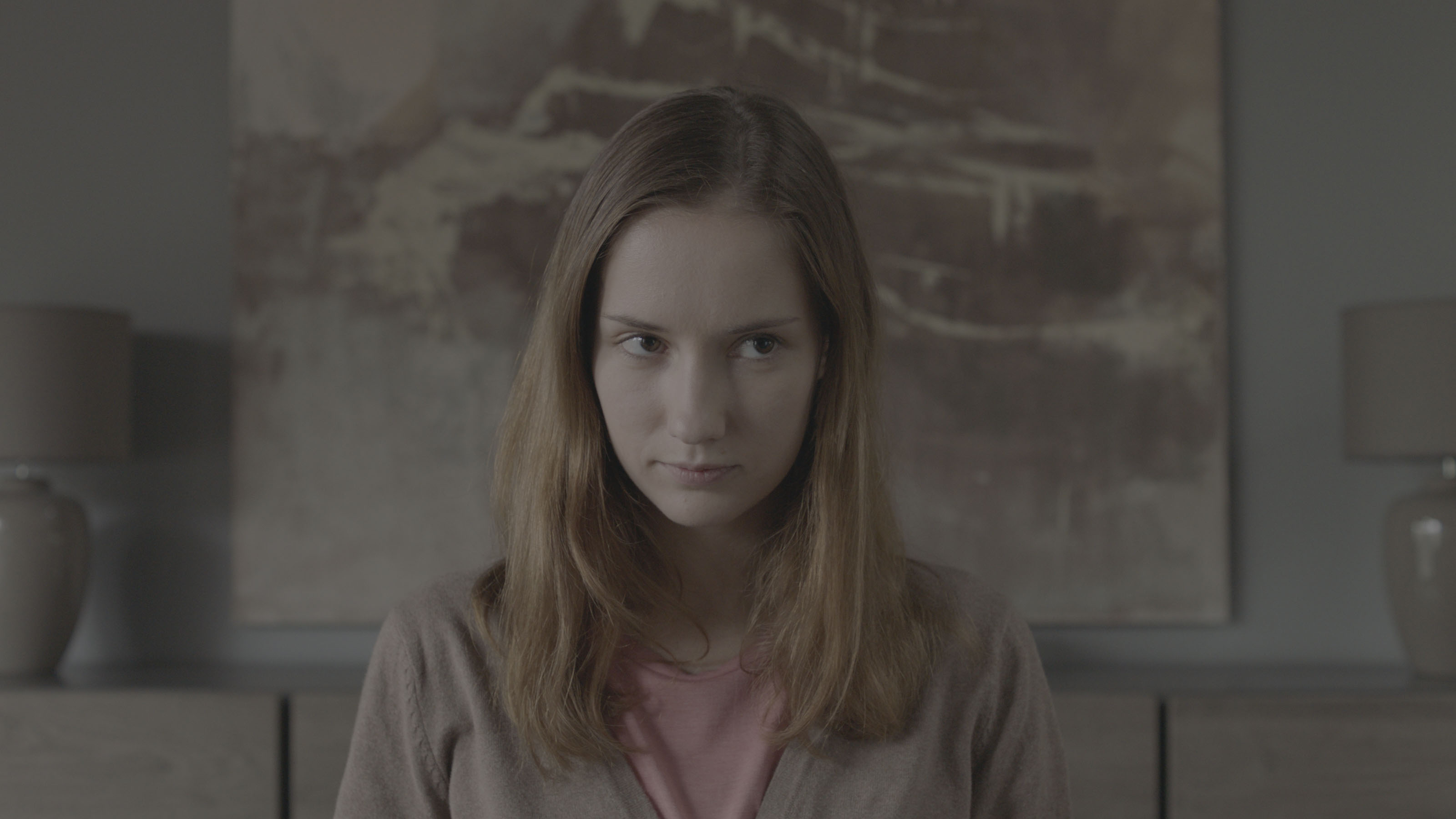
It turns out that Mia has entered a religious community that punishes their children to cleanse and purify them. Hogenauer explains: “As a result of manipulation within the family, she gradually begins to lose herself and abandon her humanity and her relationship with the child entrusted to her. I’m fascinated with manipulation — how people communicate and manipulate each other, and how society manipulates people.”
Researcher at Heart
“As soon as you start digging into manipulation,” Hogenauer says, “you come across all these sects and cults and their strategies for manipulation — not only brainwashing, but love bombing, too. I spent a year and a half researching and reading a lot of books. including on au pairs. I read lots of blogs by teenage girls.”
Eventually, he came across the cult Twelve Tribes, which was established in the 1970s in the US, and then spread to Europe. Twelve Tribes stand out for their medieval methods of punishing children, even babies, to purify them in anticipation of the second coming of Jesus. Everyone in the community “raises” the children collectively. A few years ago, a German journalist managed to document the beatings, and some members moved from Germany to the Czech Republic.
"As soon as you start digging into manipulation, you come across all these sects and cults and their strategies for manipulation — not only brainwashing but love bombing, too. I spent a year and a half researching and reading a lot of books.”
“There are plenty of films about big hippie sects living on farms. That was what the first version of my screenplay was about. Then I realized that strangeness and evil shouldn’t be visible at first glance, so I changed the concept and created an upper-class family with one kid. When I brought in an au pair, suddenly it all came together,” Hogenauer says. He wrote eleven drafts of the script, and research was key to his process. “I have to read everything. The tree is very wide. Philip Zimbardo’s book on evil and his Stanford prison experiment were the most important part, though.”
The theme of manipulation was present already in Hogenauer’s mid-length FAMU graduation film, Tambylles, which premiered as part of the Cinéfondation selection at Cannes in 2012. Says Hogenauer, “I was fascinated by the manipulation of form — by fiction versus documentary — and wrote my thesis on Peter Watkins around the same time.” Watkins, a British film and TV director, is known for The War Game (1965) and Punishment Park (1971), works that question so-called documentary reality by creating a feeling of “live” documentary. Today they are considered at the forefront of what is now known as “hybrid cinema.” Besides Watkins, Hogenauer also cites Michael Haneke as an inspiration.
The Action Makes You
A Certain Kind of Silence is the eerie story of an au pair a long way from home, fully dependent on the care and trust of her new host family. Slowly, as Mia gets to know them, the viewer gets to know them too. Hogenauer explains his view of the role of the actors: “Things happen in life, and you can’t choose your emotions — wouldn’t that be great! — but what you can choose is your actions, so the characters are what they do: the action makes them. In the end, the character’s there, but it’s in the mind of the audience. Every actor is different, just like every person is different. First, you have to figure out how they work, especially since we were working with a combination of professional A-film actors, actors from the theatre, some of whom didn’t speak English, plus nonactors, including a child. It takes time, and that was one thing we didn’t have much of.”
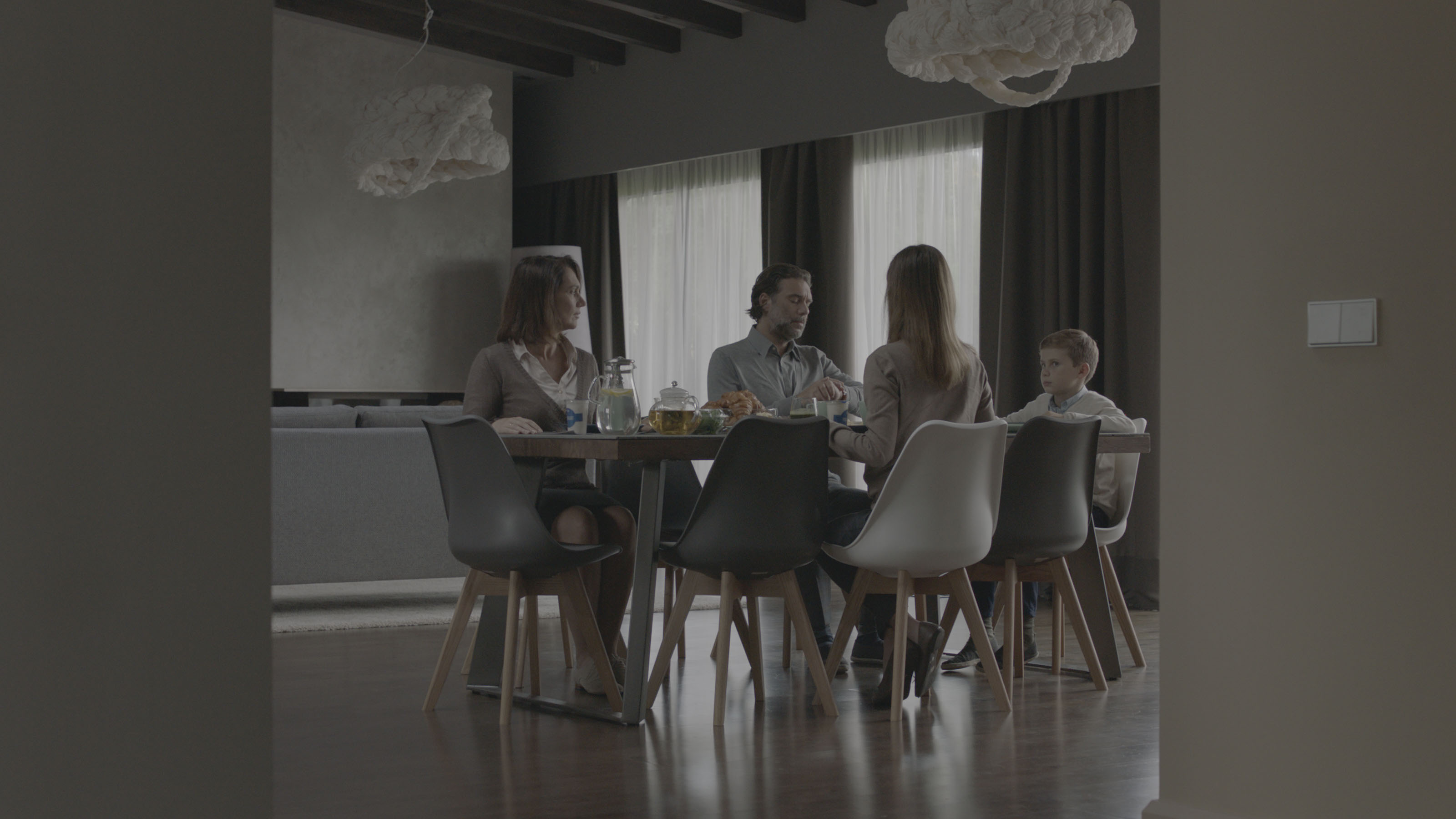
Apart from Mia, played by Eliška Křenková (Family Film, Wasteland), most of the cast is Dutch. Coproduction funding from the Netherlands was the defining factor that set the project in motion, in summer 2017. “We got funding in mid-July and started shooting in late September,” Hogenauer says. “We had to find all the actors and the main crew within that time frame, as well as the main locations.”
Dutch cinematographer Gregg Telussa came recommended by the coproducers of Circe Films. “He had the right books on his shelves,” Hogenauer laughs. “We talked about films, photographers, painters — you just mention a title and you know right away what the guy is thinking about. We really connected.”
Location as Character
Another defining factor was the coproduction with Latvia’s Tasse Film. They brought in production designer Laura Dislere, and serviced the 25 shooting days in Latvia. “There are these two worlds in the film,” Hogenauer explains. “The world of the community, who live in this specific kind of houses, and the external, outside world, where Mia is from. I wanted to visually separate the two worlds in terms of color and composition. The outside is a bit under construction, noisy and disturbing. But the society on the inside is very balanced.”
Initially, the plan was to go north to Scandinavia, but for funding reasons, Latvia became the base, so the director and his producer, Petr Oukropec, had to swiftly adapt. “We went there to find out what it was like, and it looked great. In one corner it felt like you could be in Prague or Berlin, in another it felt like the Baltics and the Nordic countries. Locations have to be chosen like actors. You just feel it and make a choice."
“I wanted to visually separate the two worlds in terms of color and composition.
The outside is a bit under construction, noisy and disturbing.
But the society on the inside is very balanced.“
From Script to Screen
Shooting abroad proved to be a positive experience. What challenged the debut director the most was the development process, when he had to not only distil his story out of the immense research material but to make a foreign reader understand.
“When I count the days of writing, I had twenty-five days of shooting, but just to write the one-page synopsis in English took me two months! The challenge is that you’re using words at that point, but the result is visual, so I was struggling a lot with it. Especially since I use sparse dialogue. Pictures are really my thing.”
Someone to Lean On
Being a foreigner on set is an obstacle from the outset, and Hogenauer and Oukropec had only one other Czech as part of their team: assistant director — or as Hogenauer calls him, his creative assistant — Vojtěch Strakatý. “I wanted to have someone there to have a creative dialogue with. When I shoot, I’m close to the camera, not the monitor. There’s a kind of energy close to the camera, and I’m looking at the actor right in front of me. With my assistant by the monitor, after a good take, I could just look at him and we’d nod our heads.”
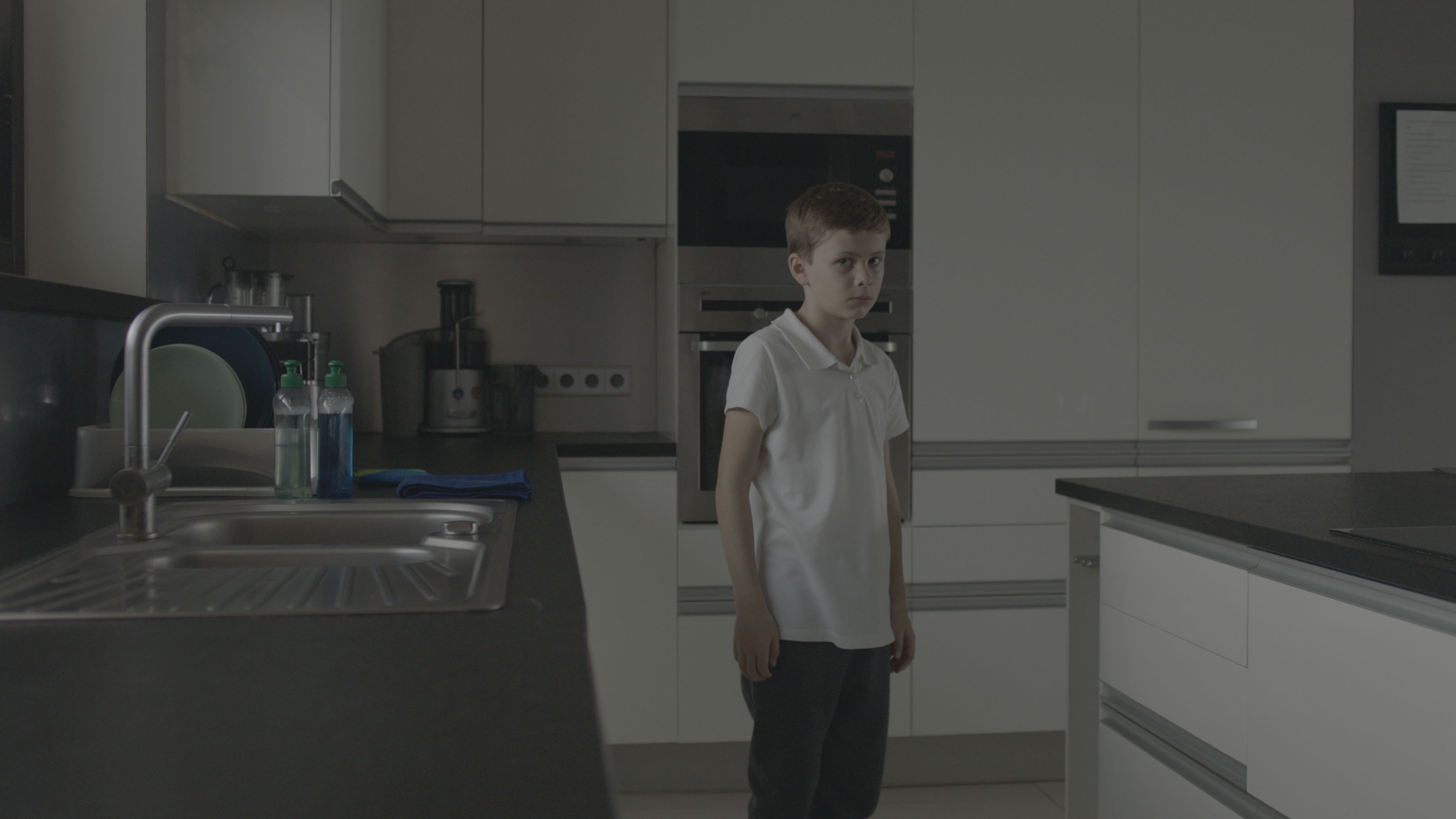
A set of experienced leads also offered a sense of comfort. “The first time I met with Roeland Fernhout (the father) and Monic Hendrickx (the mother), I asked if they had ever worked with a first-time director before. I told them it might get complicated since I would be searching and wouldn’t always be completely sure what I was looking for. Roeland said that was one of the reasons they decided to do the project — they wanted to search with me! So that reassured me.”
Producer Petr Oukropec on the financing process:
“The Czech Film Fund gave us development support, followed by production support in 2015. We had already received MEDIA support in 2013 as part of Negativ’s slate support. After the Berlinale Co-Production Market in 2016, we were very optimistic. We connected with Dutch producers Lisette Kelder and Stienette Blosklopper (Circe) and also made first contact with potential sales agents. A planned coproduction with Denmark unfortunately fell through, and the financing strategy collapsed. We got back on track after Berlinale 2017, where we found the ‘Baltic trail.’ I started searching for the ideal location: a town with a Scandinavian feel and a sea. We started working with producer Aija Berzina of Tasse Film, and she found a way to cofinance with NFC and Riga Film Fund, which resulted in our great experience with the Latvian crew and production background. During production, we received Eurimages support, which was an important sign of the project’s international potential. Finally, the most crucial support came from NL Fonds. A Certain Kind of Silence has been selected for Les Arcs Work In Progress. The budget of the film is 850,000 euros.”


